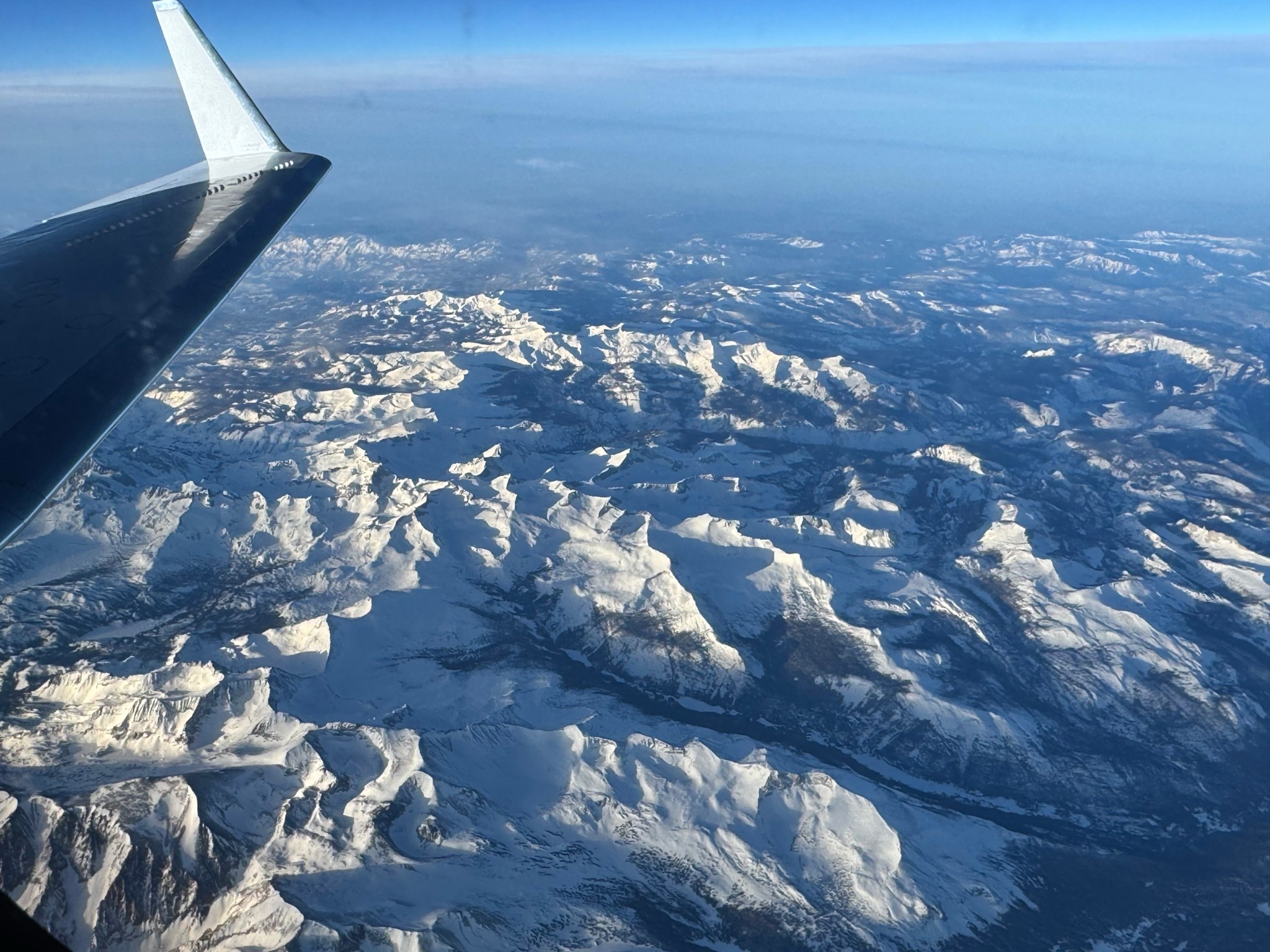3 min read
Preparations for Next Moonwalk Simulations Underway (and Underwater) The C-20A aircraft, based at NASA’s Armstrong Flight Research Center in Edwards, California, flies over the Sierra Nevada Mountains in California for the Dense UAVSAR Snow Time (DUST) mission on Feb. 28, 2025. The DUST mission collected airborne data about snow water to help improve water management and reservoir systems on the ground.NASA/Starr GinnAs part of a science mission tracking one of Earth’s most precious resources – water – NASA’s C-20A aircraft conducted a series of seven research flights in March that can help researchers track the process and timeline as snow melts and transforms into a freshwater resource. The agency’s Uninhabited Aerial Vehicle Synthetic Aperture Radar (UAVSAR) installed on the aircraft collected measurements of seasonal snow cover and estimate the freshwater contained in it.
“Seasonal snow is a critical resource for drinking water, power generation, supporting multi-billion dollar agricultural and recreation industries,” said Starr Ginn, C-20A project manager at NASA’s Armstrong Flight Research Center in Edwards, California. “Consequently, understanding the distribution of seasonal snow storage and subsequent runoff is essential.”
The Dense UAVSAR Snow Time (DUST) mission mapped snow accumulation over the Sierra Nevada mountains in California and the Rocky Mountains in Idaho. Mission scientists can use these observations to estimate the amount of water stored in that snow.
Peter Wu, radar operator from NASA’s Jet Propulsion Laboratory in Southern California, observes data collected during the Dense UAVSAR Snow Time (DUST) mission onboard NASA’s C-20A aircraft on Feb. 28, 2025. The C-20A flew from NASA’s Armstrong Flight Research Center in Edwards, California, over the Sierra Nevada Mountains to collect data about snow water.NASA/Starr Ginn“Until recently, defining the best method for accurately measuring snow water equivalent (SWE) – or how much and when fresh water is converted from snow – has been a challenge,” said Shadi Oveisgharan, principal investigator of DUST and scientist at NASA’s Jet Propulsion Laboratory in Southern California. “The UAVSAR has been shown to be a good instrument to retrieve SWE data.”
Recent research has shown that snow properties, weather patterns, and seasonal conditions in the American West have been shifting in recent decades. These changes have fundamentally altered previous expectations about snowpack monitoring and forecasts of snow runoff. The DUST mission aims to better track and understand those changes to develop more accurate estimates of snow-to-water conversions and their timelines.
“We are trying to find the optimum window during which to retrieve snow data,” Oveisgharan said. “This estimation will help us better estimate available fresh snow and manage our reservoirs better.”
The Dense UAVSAR Snow Time (DUST) mission team assembles next to the C-20A aircraft at NASA’s Armstrong Flight Research Center in Edwards, California, on Feb. 28, 2025. From left, radar operator Adam Vaccaro, avionics lead Kelly Jellison, C-20A project manager Starr Ginn, pilot Carrie Worth, pilot Troy Asher, aircraft mechanic Eric Apikian, and operations engineer Ian Elkin.NASA/Starr GinnThe DUST mission achieved a new level of snow data accuracy, which is partly due to the specialized flight paths flown by the C-20A. The aircraft’s Platform Precision Autopilot (PPA) enables the team to fly very specific routes at exact altitudes, speeds, and angles so the UAVSAR can more precisely measure terrain changes.
“Imagine the rows made on grass by a lawn mower,” said Joe Piotrowski Jr., operations engineer for NASA Armstrong’s airborne science program. “The PPA system enables the C-20A to make those paths while measuring terrain changes down to the diameter of a centimeter.”
Share
Details
Last Updated Apr 24, 2025 EditorDede DiniusContactErica HeimLocationArmstrong Flight Research CenterRelated Terms
Armstrong Flight Research CenterAirborne ScienceC-20AEarth ScienceEarth's AtmosphereJet Propulsion LaboratoryScience Mission DirectorateExplore More
6 min readNASA Tests Key Spacesuit Parts Inside This Icy Chamber
Article 5 hours ago 2 min read2025 EGU Hyperwall Schedule
EGU General Assembly, April 27 – May 2, 2025 Join NASA in the Exhibit Hall…
Article 7 hours ago 5 min readNASA Airborne Sensor’s Wildfire Data Helps Firefighters Take Action
Article 1 day ago Keep ExploringDiscover More Topics From NASA
Armstrong Flight Research Center
Humans in Space
Climate Change
Solar System
Read More Details
Finally We wish PressBee provided you with enough information of ( NASA Tracks Snowmelt to Improve Water Management )
Also on site :
- At least 59 Palestinians killed as Israel escalates Gaza bombardment
- No Way: FBI Assesses That Venezuela Facilitating Migration of Gang Members to US
- Shannon Sharpe accused of choking female production assistant at Fox Sports prior to $50M rape lawsuit: report

